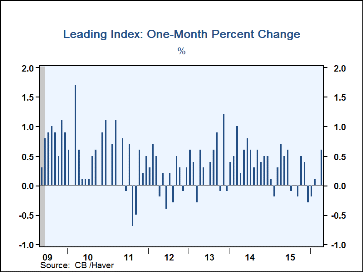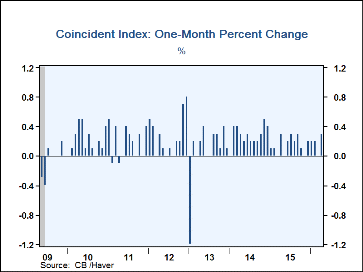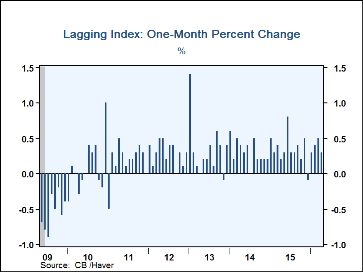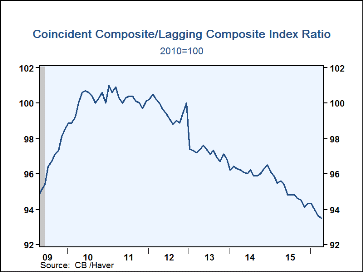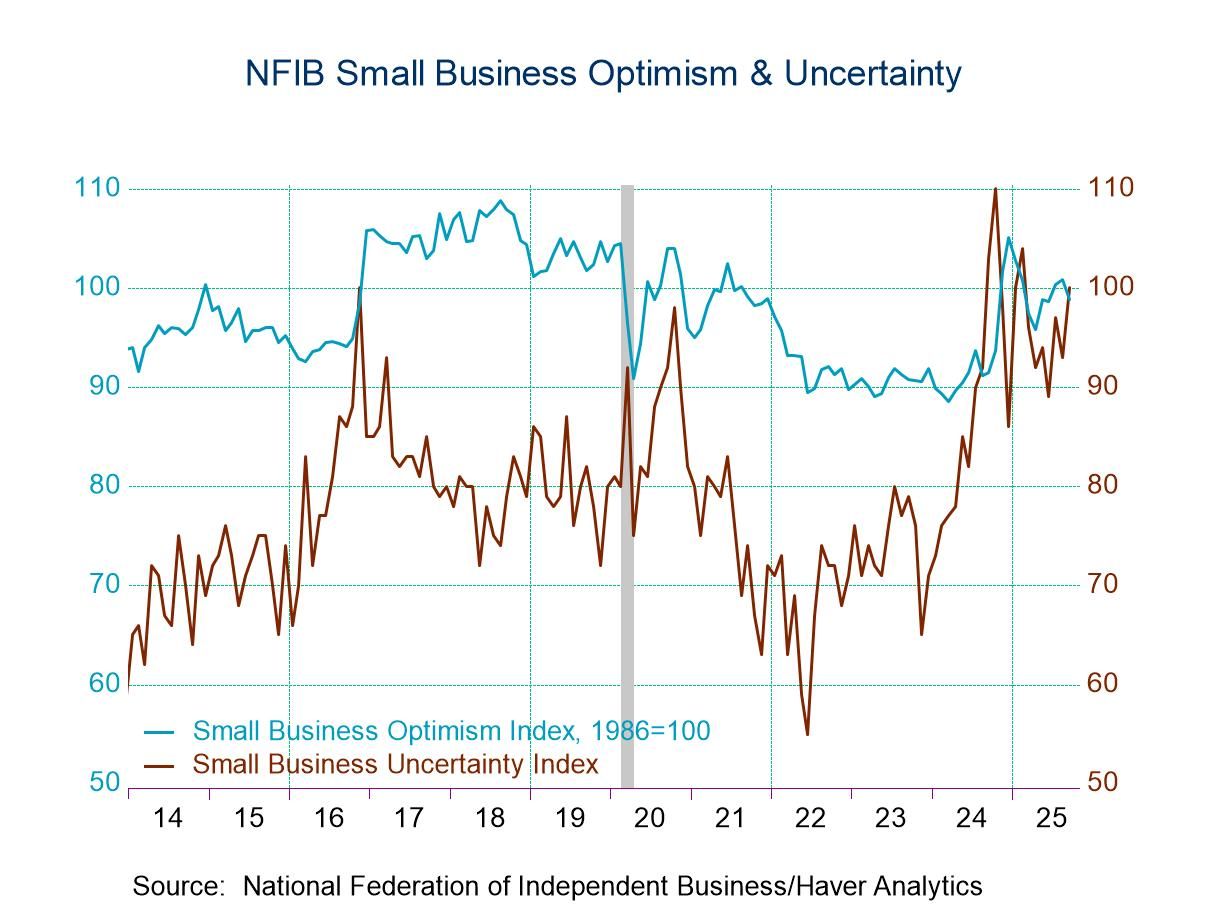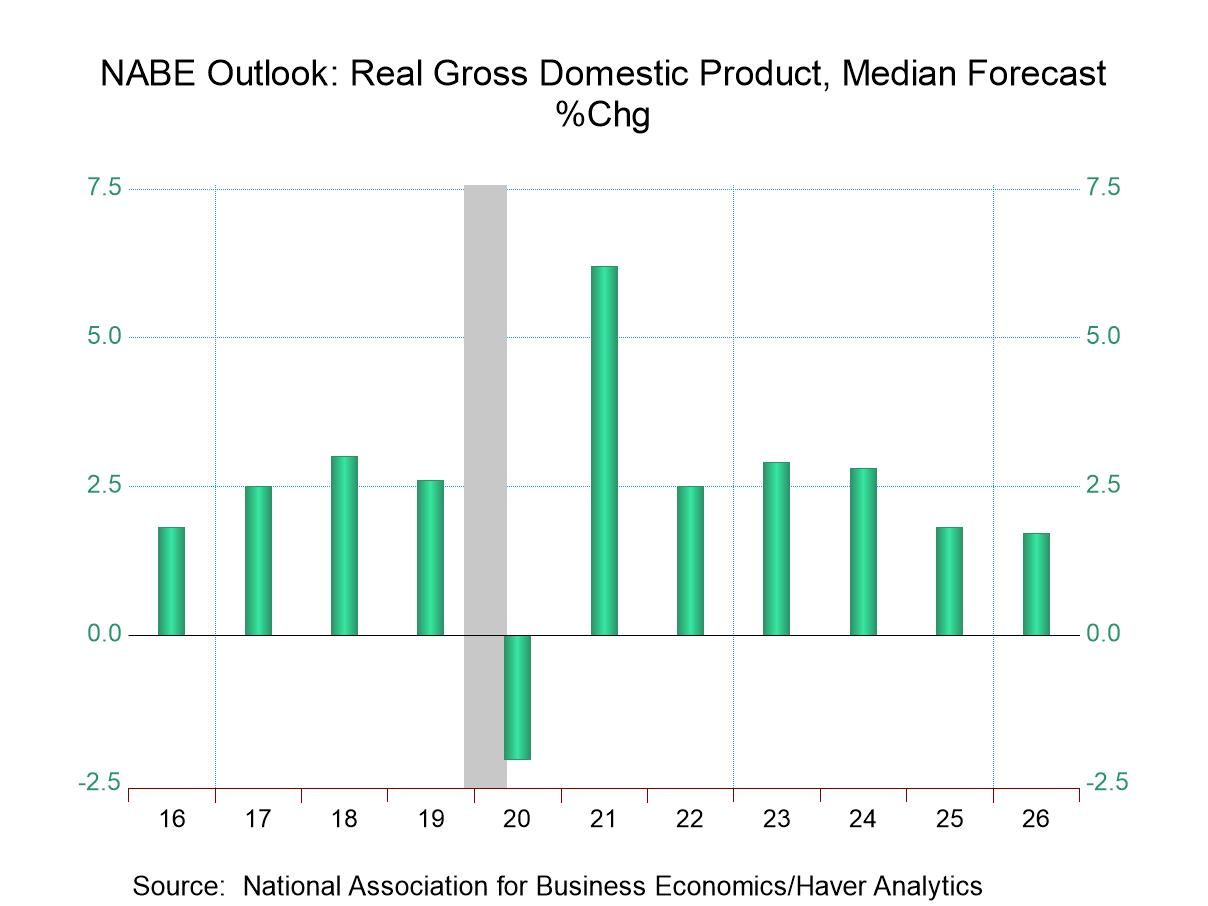 Global| May 19 2016
Global| May 19 2016U.S. Leading Economic Indicators Firm
by:Tom Moeller
|in:Economy in Brief
Summary
The Conference Board's Composite Index of Leading Economic Indicators increased 0.6% during April (1.9% y/y), following an unrevised 0.2% March gain. It was the largest increase since June, and beat expectations for a 0.3% rise in the [...]
The Conference Board's Composite Index of Leading Economic Indicators increased 0.6% during April (1.9% y/y), following an unrevised 0.2% March gain. It was the largest increase since June, and beat expectations for a 0.3% rise in the Action Economics Forecast Survey. The three-month change in the index improved to 2.3% (AR). A longer workweek, fewer initial claims for jobless insurance, more building permits, higher stock prices, a steeper interest rate yield curve and the leading credit index had the largest positive effects on the index. Weaker consumer expectations for business & economic conditions had the only negative contribution.
The coincident index increased 0.3% (1.8% y/y) after zero change. April's gain was the largest monthly in three months. Three-month growth improved to zero (AR) after being slightly negative. Nonfarm payrolls, personal income less transfers, manufacturing & trade sales and industrial production each contributed positively to the index.
The lagging index increased 0.3% (4.1% y/y) after an unrevised 0.4% gain. Three-month growth increased to 6.8%, its strongest in three years. More C&I loans, a longer duration of unemployment and a higher consumer installment debt/personal income ratio contributed positively to the index rise last month.
The ratio of coincident-to-lagging indicators also is a leading indicator of economic activity. It measures excesses in the economy relative to its ongoing performance. This ratio declined to the lowest level since 1975.
The Conference Board figures are available in Haver's BCI database; the components are available there, and most are also in USECON. The forecast figures for the Consensus are in the AS1REPNA database. Visit the Conference Board's site for coverage of leading indicator series from around the world.
How Did the Great Recession Affect Payday Loans? from the Federal Reserve Bank of Chicago is available here.
| Business Cycle Indicators (%) | Apr | Mar | Feb | Apr Y/Y | 2015 | 2014 | 2013 |
|---|---|---|---|---|---|---|---|
| Leading | 0.6 | 0.2 | -0.1 | 1.9 | 4.3 | 5.8 | 2.9 |
| Coincident | 0.3 | 0.0 | 0.1 | 1.8 | 2.5 | 2.6 | 1.4 |
| Lagging | 0.3 | 0.4 | 0.5 | 4.1 | 3.7 | 3.7 | 3.9 |
Tom Moeller
AuthorMore in Author Profile »Prior to joining Haver Analytics in 2000, Mr. Moeller worked as the Economist at Chancellor Capital Management from 1985 to 1999. There, he developed comprehensive economic forecasts and interpreted economic data for equity and fixed income portfolio managers. Also at Chancellor, Mr. Moeller worked as an equity analyst and was responsible for researching and rating companies in the economically sensitive automobile and housing industries for investment in Chancellor’s equity portfolio. Prior to joining Chancellor, Mr. Moeller was an Economist at Citibank from 1979 to 1984. He also analyzed pricing behavior in the metals industry for the Council on Wage and Price Stability in Washington, D.C. In 1999, Mr. Moeller received the award for most accurate forecast from the Forecasters' Club of New York. From 1990 to 1992 he was President of the New York Association for Business Economists. Mr. Moeller earned an M.B.A. in Finance from Fordham University, where he graduated in 1987. He holds a Bachelor of Arts in Economics from George Washington University.


